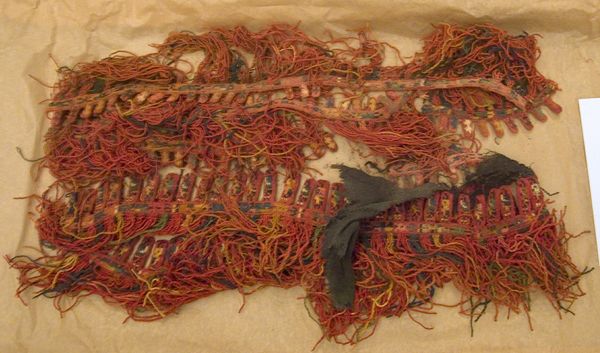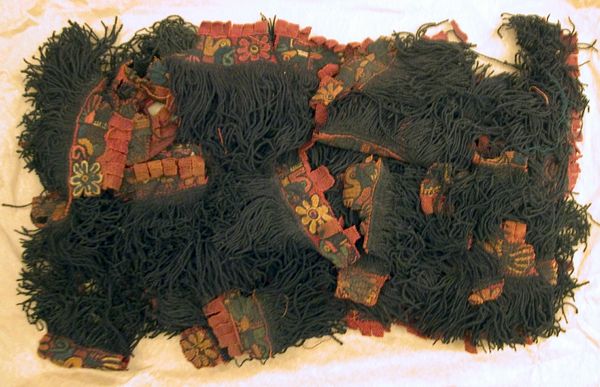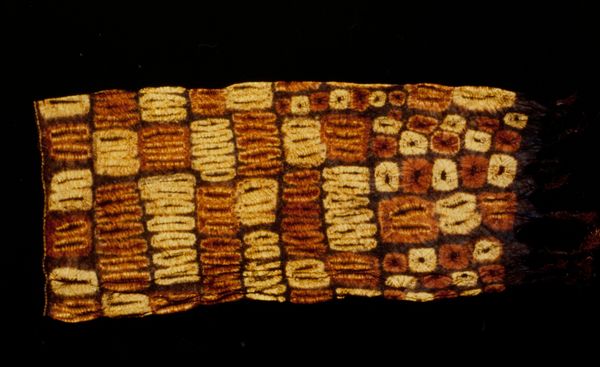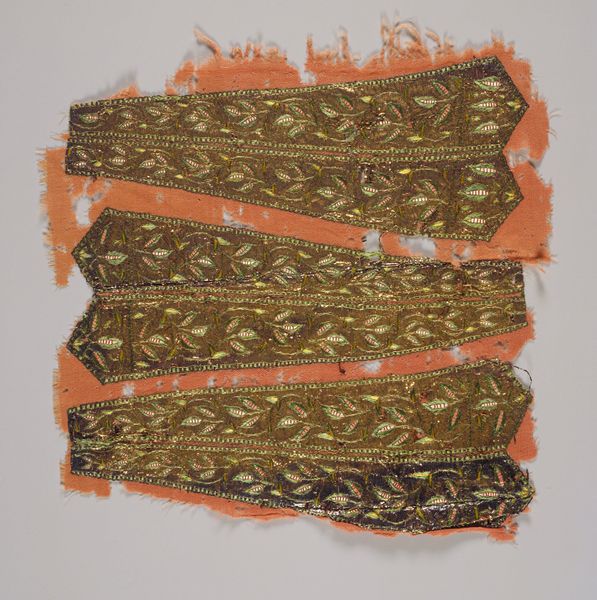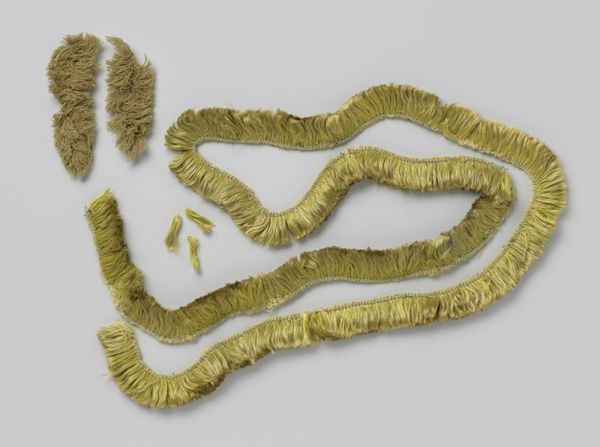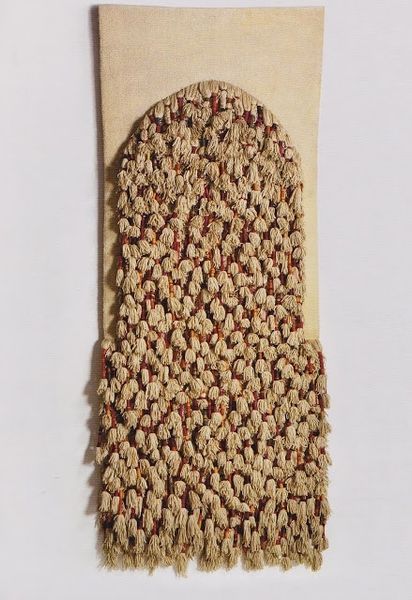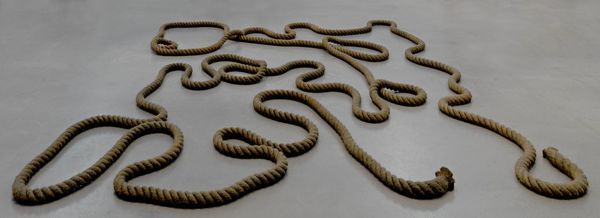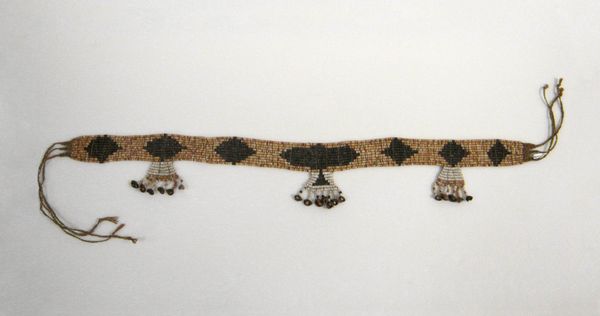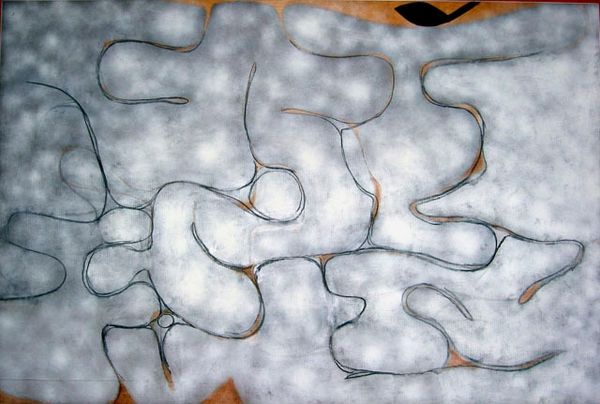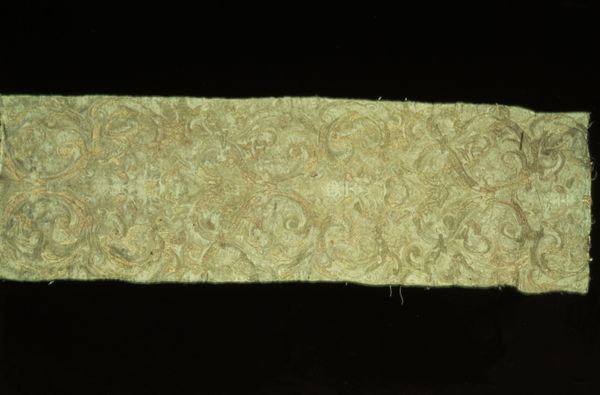
fibre-art, weaving, textile
#
fibre-art
#
water colours
#
weaving
#
textile
#
indigenous-americas
Copyright: Public Domain
These Fragments were created by the Nazca people using fiber. Look closely, and you’ll see the remnants of a complex weaving. The meticulous handwork required to create the textiles was labor-intensive. The threads are dyed in rich colors – yellows, reds, and blacks – which would have been extracted from plants and minerals. Notice the edges, finished with a decorative fringe that gives texture and movement to the overall design. These textiles weren’t just functional; they were important cultural artifacts. Fragments like these were found in tombs, hinting at the textiles’ significance in ritual practices. It’s easy to imagine these textiles as integral components of garments or adornments, perhaps signifying the social status of the wearer, or communicating important cultural narratives. By understanding the materials and the hands-on processes involved, we can better appreciate the rich cultural context that shaped these works. These textiles bridge the gap between the practical and the artistic.
Comments
No comments
Be the first to comment and join the conversation on the ultimate creative platform.
